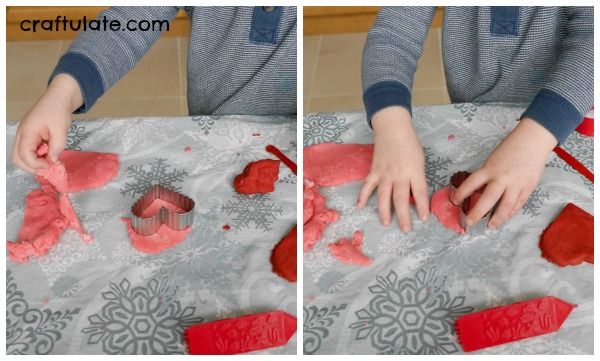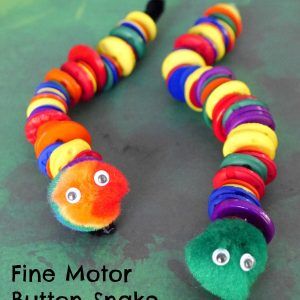Here are nine basic play dough skills that I think every preschooler should learn in order to get the most out of playing with dough!

The following post contains affiliate links, which means that at no extra cost to you I can make a tiny bit of money to help support this blog. Thank you!
These techniques involve all different kinds of fine motor skills and are a great way to extend play.
Flattening – palm of hand
This is a simple skill that requires minimum co-ordination but some hand strength.
Flattening – with a roller
Flattening play dough with a roller is much harder than just using hands! At first glance it looks like all they have to do is roll it back and forth over the dough but when that doesn’t work they will have to apply some pressure as well.
Cookie Cutters Once the dough has been flattened, then it is fun to make “cookies”. There are actually more stages to this than you might think – first they’ll need to push the cutter into the dough, then remove it cleanly from the rest of the dough, and finally push the dough out of the cutter. Depending on the ability of the child, this can be quite tricky to do without ruining the shape of the cut-out! We practiced this skill a lot when we played with our Valentine’s Day play dough.

Pinching A fun activity is to hide things in play dough for your kids to find! In the Valentine’s Day activity pictured above, we started with pinching little plastic hearts out of the dough. Last year I set up an unwrapping activity for F – it worked on lots of great fine motor skills but his favourite thing to unwrap was a train that I had covered in a huge mound of play dough! He had to pinch and pull at the play dough to rescue the train.

Ball rolling This is something my son really struggles with. Both hands are required to form the ball which works on bilateral coordination.

Children can be encouraged to make more play dough balls if you suggest an end result – like making this cute caterpillar!

Log rolling Start with a ball of dough and roll back and forth with the palm of their hand. A play dough log will form! For added incentive, turn them into worms or snakes – perhaps a googly eye or two as well! If they’re having trouble making logs with one hand, try two hands – and vice versa.

Snails are also fun to make using this skill as they will need a super long log, roll it up for the shell, then place it on top of a shorter log. Or make faces! Lots of little logs are needed to make hair!

Slicing Children can learn to cut lines into play dough using either a rotary cutter or plastic play dough knife. Challenge them to cut straight lines, curves, and zig-zags!

Cutting We mentioned play dough scissors previously – they just have a plastic blade so are quite safe. If your child has mastered the art of log rolling, try cutting the logs with play dough scissors.







